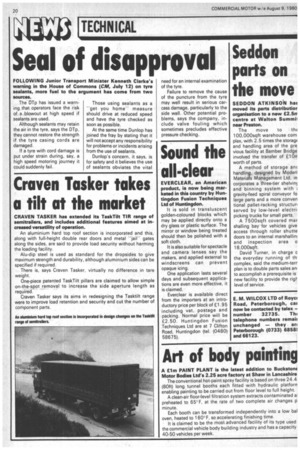Seal of disapproval
Page 22

If you've noticed an error in this article please click here to report it so we can fix it.
FOLLOWING Junior Transport Minister Kenneth Clarke's warning in the House of Commons (CM, July 12) on tyre sealants, more fuel to the argument has come from two sources.
The DTp has issued a warning that operators face the risk of a blowout at high speed if sealants are used.
Although sealants may retain the air in the tyre, says the DTp, they cannot restore the strength if the tyre casing cords are damaged.
If a tyre with cord damage is put under strain during, say, a high speed motoring journey it could suddenly fail. Those using sealants as a "get you home" measure should drive at reduced speed and have the tyre checked as soon as possible.
At the same time Dunlop has joined the fray by stating that it will not accept any responsibility for problems or incidents arising from the use of sealants.
Dunlop's concern, it says, is for safety and it believes the use of sealants obviates the vital need for an internal examination of the tyre.
Failure to remove the cause of the puncture from the tyre may well result in serious carcass damage, particularly to the side wall. Other potential problems, says the company, include valve fouling which sometimes precludes effective pressure checking.












































































































